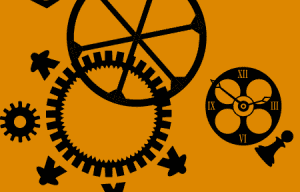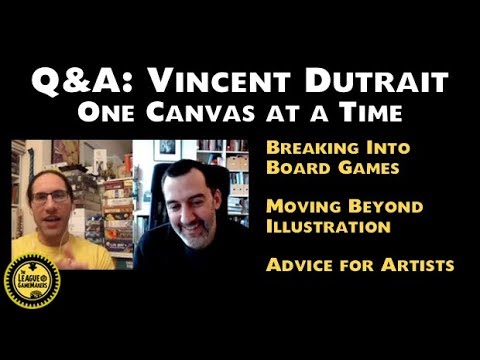
I first titled this post, “I blame Hearthstone” – blame as in for completely sucking me in, perhaps to the cost of countless productive blog posts or games designed. But that clickbait doesn’t do justice to how I truly feel about it – Hearthstone: Heroes of Warcraft is an innovative design, a quality experience and a great game. A game that happens to play in about 10 minutes on my mobile device, again and again.
For those of you who have not yet played, let me set the stage. Hearthstone is a 2 player game (vs computer or another player), an online collectible card game (CCG) developed by Blizzard and based off their successful Warcraft series of games. If it sounds similar to another famous CCG, it is. Hearthstone definitely builds on the foundation of Magic: The Gathering (MtG). But it is, I can say, it’s own unique game. Notably in the way in which each player’s turn is uninterruptible and the way the mana is consistently built up on turns, to name a couple key differences. It is a free-to-play on iOS and Android devices, and it allows for optional purchases in a variety of ways. It is played by an estimated – wait for it – 40 million users!
Hearthstone allows users to build their own decks of cards, or sometimes play pre-made decks (always 30 cards). There are 9 unique classes in the game, which governs some of the creatures you can use and all the class spells you can use. There is a neutral library of cards that any class can use. Each card can appear in your deck twice. The game is extremely random, luck of the draw and random card effects are rampant. (I mention that because I will reference this in some lessons that exist despite this). But you’ll likely not notice any issues, because each game lasts only a few minutes, and the animations, sound effects and clickable extras are more than enough to entertain you along the way until the next fix.
THE DIGITAL COMPONENT
What I’m not going to do is discuss the fancy bells and whistles and clickable extras, or slick Harry Potter-esque pictures that come to life in the premium versions of some cards or the software that rolls everything behind the scenes. Do these contribute to the success of Hearthstone? – absolutely. Can a tabletop designer learn anything from them? Maybe some UI/UX lessons, but not game design. It’s apples to oranges to compare these aspects to tabletop experiences, even if you look at MtG directly.
What I want this article to focus on are the ways that the game itself, the core experience and design – is a highly successful one that has lessons that tabletop designers can learn from. There are many lessons we could cover, but I’ll just name a few and see if readers have others in the comments.
- POWER ON TURN 2.
- TWO STEPS FORWARD, ZERO STEPS BACK.
- SHORT AND LONG TERM GOALS, VARIETY OF PLAY
- DEFENSE AGAINST ANALYSIS PARALYSIS
- DESIGNER SANDBOX
POWER ON TURN 2.
Ok, so what do I mean here? And what happened to turn 1? Well, Hearthstone does have a powerful mulligan mechanic that allows players to completely replace 1 or more of their starting cards. But, even if you get a few cards that aren’t going to get your party started, you might mulligan them and still get crap. Ahh, the random draw.
BUT! – Hearthstone has a clever solution to cure that hopeless draw. No matter how bad your turn 1 is, you have a guaranteed play on turn 2. Each hero class has a special ability, and every special ability costs 2 mana. Since the game ramps up in mana 1 per turn (1-2-3-4… all the way to 10 mana on turn 10 and beyond), this means that on turn 2, you have something to do. And generally speaking, it’s a useful something. I know many tabletop games that have given me nothing useful to do on a few turns.
Lesson: Give the player something useful to do, quickly.
TWO STEPS FORWARD, ZERO STEPS BACK
In Hearthstone, for better or worse randomness reigns supreme, as I’ve said. You could build a fantastic deck and still spend many matches losing. So, it’s very easy to see over the course of a few sessions this pattern – gain a star, lose a star, gain a star, lose a star. Granted, good decks – people better than me, can do well. But for those of us living star to star, it’s a big deal to lose one. Now here’s the genius part – Hearthstone employs two methods which make this a better experience:
- Win streaks grant double stars, lose streaks are same value. (you only ever lose 1)
- Early levels allow gains, but not losses. So if you just made it to level 20, and then lose a star – you DON’T slip backwards. Your current level is locked in once you achieve it.
SHORT AND LONG TERM GOALS, VARIETY OF PLAY
Hold on, let me check what the new quest is. You see, at midnight, every night – a new goal is revealed. Win 3 times as Warrior, or 5 times as either Mage or Hunter. Or cast 30 spells. Whatever it is, it’s focus in the short term. It’s something to shoot for in the vast arena of the game. The overall goal is vast – something like an exploration goal to see all the content, play every card combo. But some players are never going to get that goal. So it’s critical in my view that the game offer some things to shoot for, and a direction to go.
Of course, putting in something new each day at a certain time is also largely possible due to the medium and is another form of gamification, but I equate this as something akin to the lord cards in Lords of Waterdeep, or the hidden goals in Suburbia. In Hearthstone, there’s short term reward, mid game adventure and a long term payoff all in one system and I think they work a long way to the success of the game.
Lesson: Give some benchmark ways to score and accomplish goals, and a variety of play options when possible.
DEFENSE AGAINST ANALYSIS PARALYSIS
Ok, yes the fact that the computer system makes everything go faster, handles clean up, maintenance, etc has an impact. But there’s more. Hearthstone employs some deliberate ways to make analysis paralysis fade in this game. I went back to look at Luke Laurie’s league 2 part series on Analysis Paralysis to see if he calls out some of the things I see here and he absolutely does. Hearthstone employs 8 of the 10 things on Luke’s list – including limits, turn length, hidden information, randomness, gradual escalation and more!
Consistency in the system is the main one I want to bring up. In Part 1 of that series, Luke mentions:
I mentioned earlier that you get 1 mana on turn 1, and 2 mana on turn 2. until turn 10 when you have 10 mana per turn for the rest of the game. What this does is give you an expected process to work within. You know that if you have a card that costs 5 and another that costs 6, you can never play them both on a turn (unless you have cards that bend mana limits). Generally speaking however, you are quickly just evaluating the best card for your situation, and not considering the other path of action further, or pushing the heavy decisions on to creating the deck.
This also reminds me of a post by Chris Strain, where he talked on the position of random elements in design. I think Hearthstone uses random in the right ways here – both before and after a decision avoids analysis paralysis while giving a framework of when that decision needs to be made.
Lesson: Reduce Analysis paralysis using a variety of methods. Keep randomness deliberate and its position planned.
DESIGNER SANDBOX
This last point is mostly a designer point, rather than a player experience lesson. Hearthstone has a variety of play environments. Without getting too much into it, there’s 2-3 ways to play at any time, and one special mode called Tavern Brawls. I guess if there’s any lesson for players it’s that each of these modes of play are very different and get a bunch of players interested. We as gamers can always learn from games that can pull off a variety in play style. But I wanted to talk specifically about the design gain of the brawls.
The Tavern Brawl mode changes every week, a totally new set of rules every Weds through Sun. Some of these modes are very experimental. Some will change the rules in ways that are absolutely broken. But so what? It’s fun to break things. It’s fun to see cards you cannot normally play. It’s fun to suddenly be playing a co-op in a competitive game. It’s fun to bend rules and it inspires you in your own design – at least it does me.
Lesson: Breaking rules is good for design inspiration. Hearthstone is not only a game, it’s a design exercise, live – every week!
—
Those are just a few of the ways Hearthstone impresses me as a game. I could go on about the importance of card play order but I’ll stop here. Firstly, because I hope some players who have experienced this game will chime in with what they think makes this game so successful. And because well – secondly there’s a tavern brawl calling my name and a new quest to fulfill!








